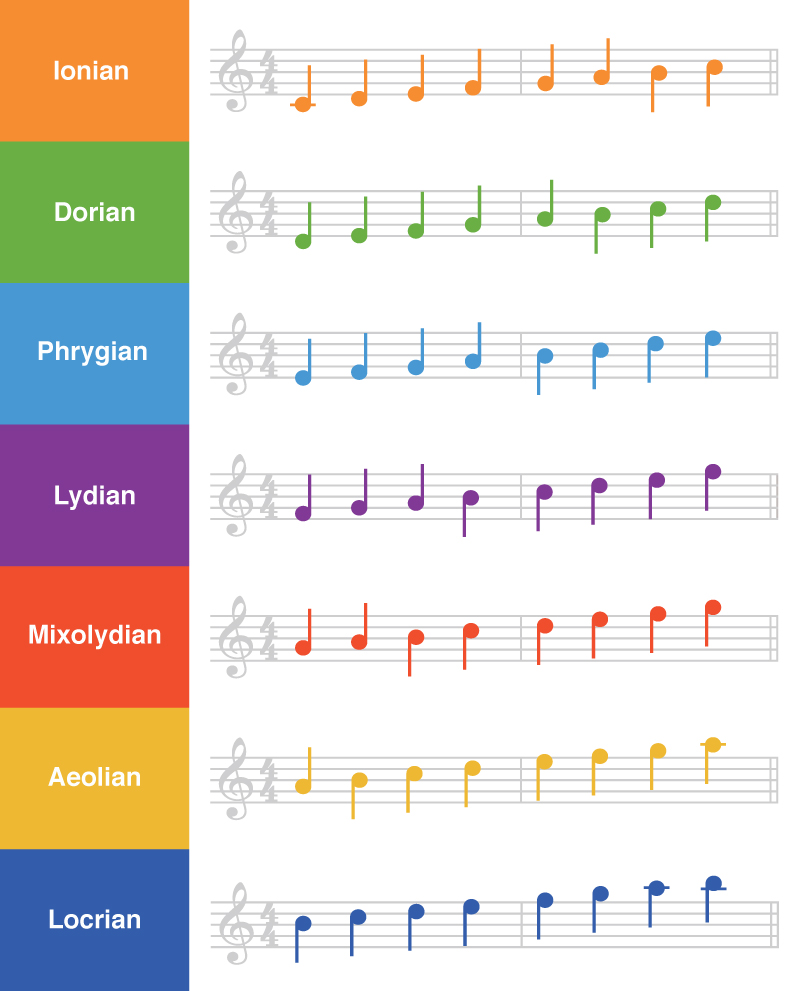 What do you mean, minor versus minor?
What do you mean, minor versus minor?
As music teachers, I’m sure everyone is familiar with traditional minor scales. Students in High School are required to memorize Major and their relative Minor scales. For example, “C” major (no sharps or flats) and “A” minor. Around 550 B.C. the Greeks developed the Major scale (probably on an early for of a string instrument). They realized that what we call “Do” was no necessarily the only tonal center within a set of an eight note scale. Subsequently, the seven modes were developed. Even though the modes used the same pitches, each scale was its own entity.
 The common major scale is also known as the “Ionian” scale, the second degree is the “Dorian,” the third is the “Phrygian,” the fourth the “Lydian, fifth is the “Mixolidian,” sixth “Aeolian,” and the seventh is “Locrian.”
The common major scale is also known as the “Ionian” scale, the second degree is the “Dorian,” the third is the “Phrygian,” the fourth the “Lydian, fifth is the “Mixolidian,” sixth “Aeolian,” and the seventh is “Locrian.”
During the Renaissance, Baroque, and Classical periods, when organized music first started evolving, the Aeolian scale was the minor scale of choice by all the great composers of the day. During the 20th century however, the Dorian (or II minor scale) was the basis for Be-Bop Jazz. Today, the natural first reaction is to write down minor songs with the key signature of the relative major key. Hence, “A” minor has no sharps or flats. Upon further observation and analyzation, the “Dorian” minor in many cases is more suitable. “A” minor now has “F#” in the key signature. When improvising, this dorian scale, aesthetically sounds more appropriate. Subject to personal taste, the issue is “F#” vs. “F,” Dorian vs. Aeolian which brings us full circle to:
Minor versus Minor
Try it and see what you think… I’d like to hear from you!

